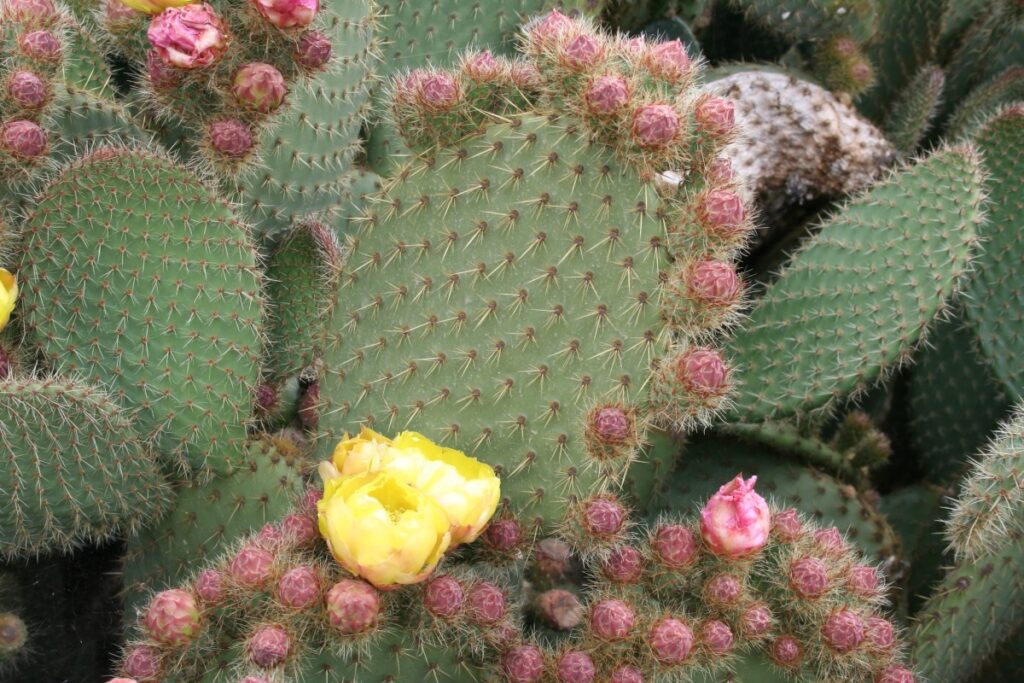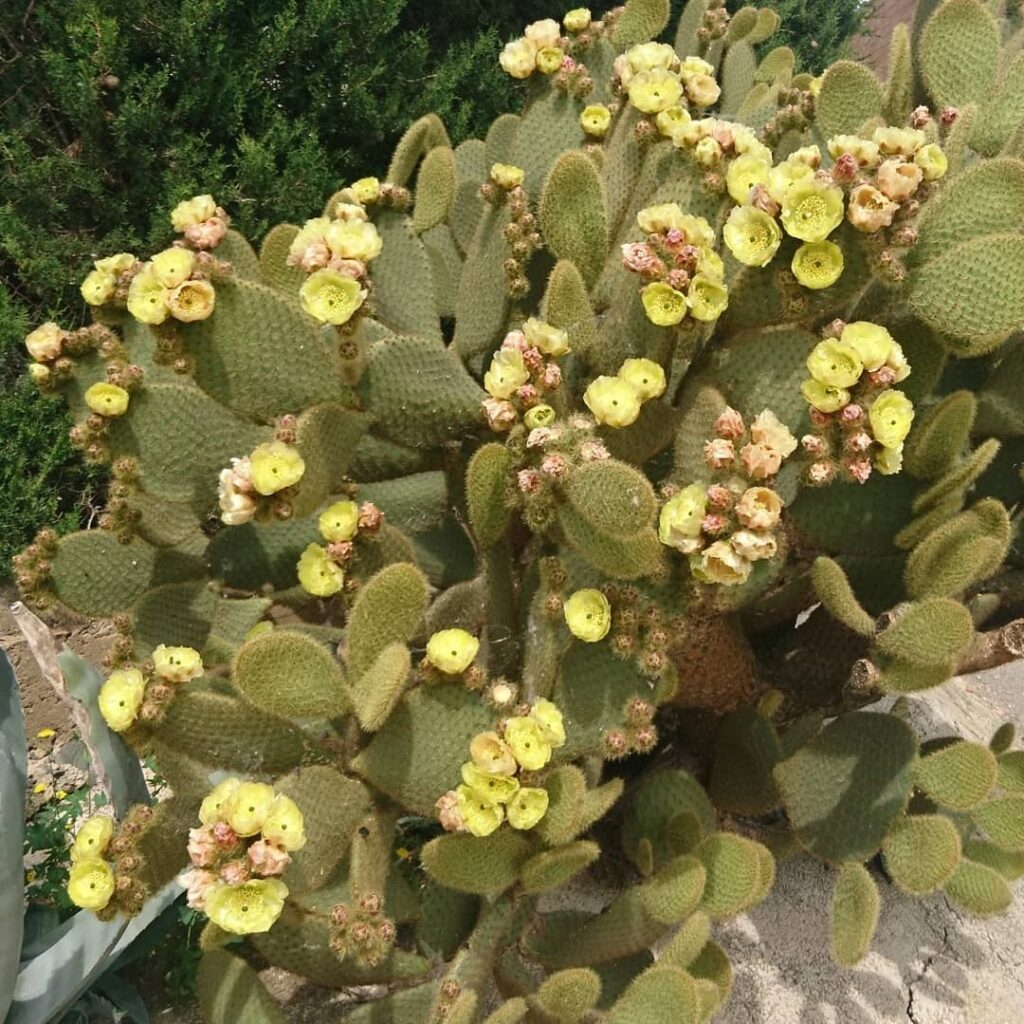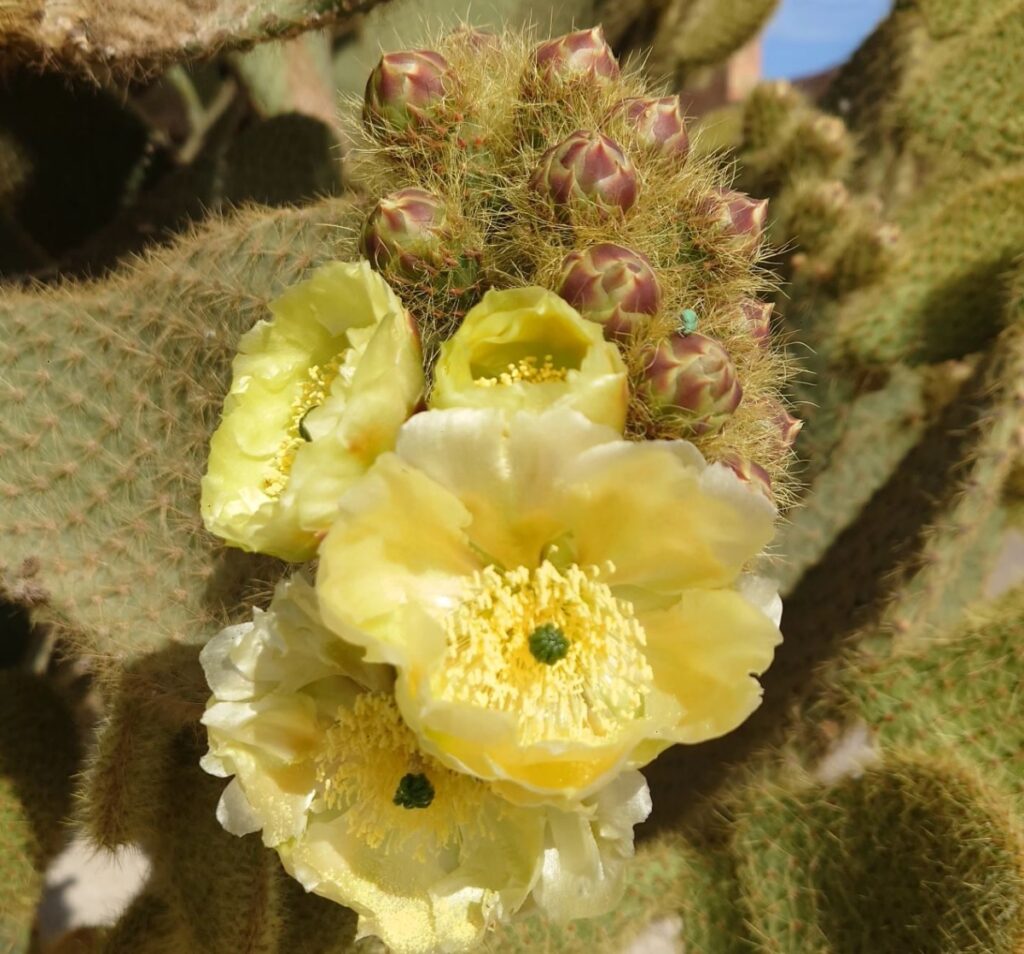Opuntia scheeri: The Prickly Pear’s Underrated Desert Cousin
Hey cactus lovers! Have you heard about the unsung hero of the desert plant world – the Opuntia scheeri? This spiky succulent may be a lesser-known cousin of the famous prickly pear, but it’s a total showstopper that deserves a spot in your garden. Get ready to be wowed by its golden glow and stunning color transformations!

Contents
About Opuntia scheeri
Native to the arid regions of Mexico, this robust cactus is a master of survival in harsh desert environments. Reaching impressive heights of up to 5 feet tall and spreading over 4 feet wide, it’s a true desert giant. The flat, fleshy pads are adorned with a multitude of tiny but mighty yellow spines that give the whole plant a radiant, golden sheen.
But the real magic happens when the delicate salmon-pink flowers start to bloom in late spring. As they unfurl into vibrant yellow cup-shaped blooms, it’s like witnessing a colorful desert sunset right in your backyard! These beauties eventually give way to petite pink-purple prickly fruits that add another vivid pop of color.
Cold-hardy and drought-resistant, the Opuntia scheeri can handle freezing temperatures down to a frosty 1°F without skipping a beat. It’s a true desert warrior that will thrive in your garden with very little maintenance required.
Related Post:
195 Opuntia Varieties [With Pictures]
How to Care for Opuntia scheeri
Light
These sun-worshippers crave as much direct light as possible. Find a nice sunny spot in your garden or on a patio, and your Opuntia will be one happy camper. If growing indoors, supplement with a strong grow light to mimic those desert sun rays. If things get really scorching in summer, give your outdoor Opuntia a bit of afternoon shade to prevent sunburn.

Water
Forget being a helicopter plant parent – the Opuntia scheeri is the perfect plant for those with accidentally neglectful watering habits. During spring, summer and fall, give it a nice drink about once or twice a week to keep the soil slightly moist. In winter, cut back to watering just once a week to prevent the roots from getting too soggy.
Soil
This cactus likes its soil on the gritty, well-draining side. A cactus/succulent potting mix amended with extra perlite or coarse sand works wonderfully. Mixing in some compost will give your prickly pal an extra nutrient boost. Aim for a slightly acidic to slightly alkaline soil pH between 6.1 to 7.8 to mimic the Opuntia’s native conditions. The right soil pH helps the plant properly absorb nutrients from the soil.
Fertilizer
Go easy on the plant food for this low-key beauty. A balanced liquid fertilizer once a month during spring and summer is plenty. You can skip fertilizing in fall and winter when growth slows down.

Temperature & Humidity
Hailing from desert habitats, the Opuntia scheeri loves heat but hates humidity. It can handle freezing temps and snow without a problem, but high humidity is a no-go that can lead to rot. Provide good air circulation around your plant.
Pests and Problems
Typical cactus pests like mealybugs or spider mites can occasionally become unwanted guests, but the Opuntia scheeri has pretty good resistance overall. Just keep an eye out for any suspicious spots or webbing. Rot from overwatering is the biggest threat.
Pruning
Very minimal pruning is needed for this low-maintenance marvel. Just snip off any dead or damaged pads to keep it tidy.
Potting and Repotting
A sturdy, fast-draining pot is ideal for container-grown Opuntias. You’ll only need to repot every 2-3 years when it outgrows its current digs. Take care when handling these beauties – those spines may be small but pack a prickly punch!
How to Propagate Opuntia scheeri
One of the coolest things about the Opuntia scheeri is how easy it is to get more plants from a single specimen. You can divide larger plants or take pad cuttings to grow new plants. Here’s how:
- Remove a pad near the base using clean pruning shears
- Allow cutting to callus over for a few days before planting
- Plant callused pad vertically in cactus potting mix, burying 1/3 of base
- Water sparingly until roots form
- Voila! Fresh new Opuntia babies to share with all your plant pals
With its low-fuss care requirements and ability to thrive in hot, dry climates, the Opuntia scheeri makes an excellent addition to drought-tolerant gardens. Just be careful when handling this prickly customer! Those glochid spines may be small but pack a powerful punch. Overall, if you want a unique, striking desert plant that’s tougher than John Wayne, the unsung Opuntia scheeri deserves a spot in your cactus squad!
